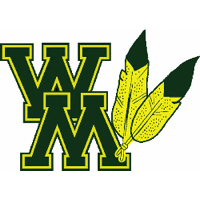Below is a summary of the abstract you submitted. Presenting author(s) is shown in bold.
If any changes need to be made, you can modify the abstract or change the authors.
You can also download a .docx version of this abstract.
If there are any problems, please email Dan at dar78@pitt.edu and he'll take care of them!
This abstract was last modified on May 8, 2016 at 10:13 p.m..

In an effort to expand the diversity of phage discovery in the order Actinomycetales, the 2015-16 William & Mary Phage Lab attempted to isolate novel phages that infect Rhodococcus erythropolis or Streptomyces virginiae. Soil, compost, sludge, manure, and stream samples from approximately 100 different locations around coastal Virginia including swamps, livestock grazing areas, treatment plants, and runoffs, were used for both direct plating and enrichment throughout the extremely warm fall of 2015. Unfortunately, not a single phage was isolated from either host from any of the samples. Positive controls using previously isolated phage from these hosts worked as expected. After five weeks of working with Rhodococcus erythropolis and Streptomyces virginiae, we returned to Mycobacterium smegmatis as our host. Given the large number of Mycobacteriophage already identified, we conducted our infections at lower temperatures, namely 30C and 25C to optimize the possibility of novel isolates. A total of 20 phages were isolated, all following enrichment; three (Qobbit, Marcolius Prime, and Dismal Stressor) were sequenced by the University of Pittsburgh. Qobbit, a Cluster A9 phage isolated from moist soil in a local woods, displays ~90% identity with other A9 phages. Marcolius Prime and Dismal Stressor, both Cluster K2 phages, were isolated from the muddy banks of the Dismal Swamp in eastern North Carolina and differ only by four bases from each other. Both phage display 99% identity to Milly and 93% identity to TM4. In a continuing effort to isolate novel phages, we pursued two additional approaches. The first approach involved “crowd-sourcing” phage discovery via direct plating to the 480 student Introductory Biology lab where 27 mycobacteriophage were isolated this past year. The second approach involved attempting, during the spring semester, yet another alternative host, Corynebacterium glutamicum. Three phages from two different locations were isolated and are currently being sequenced.


